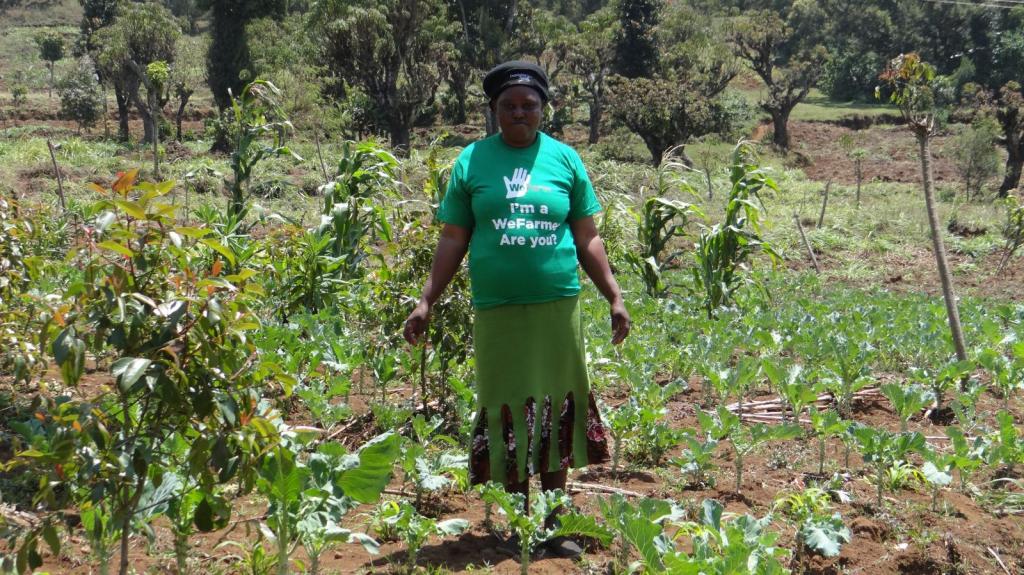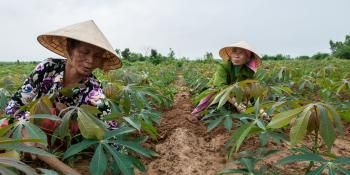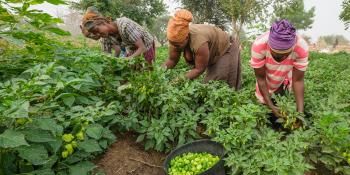CCAFS highlights how technology helps women in celebration of the International Day of Rural Women
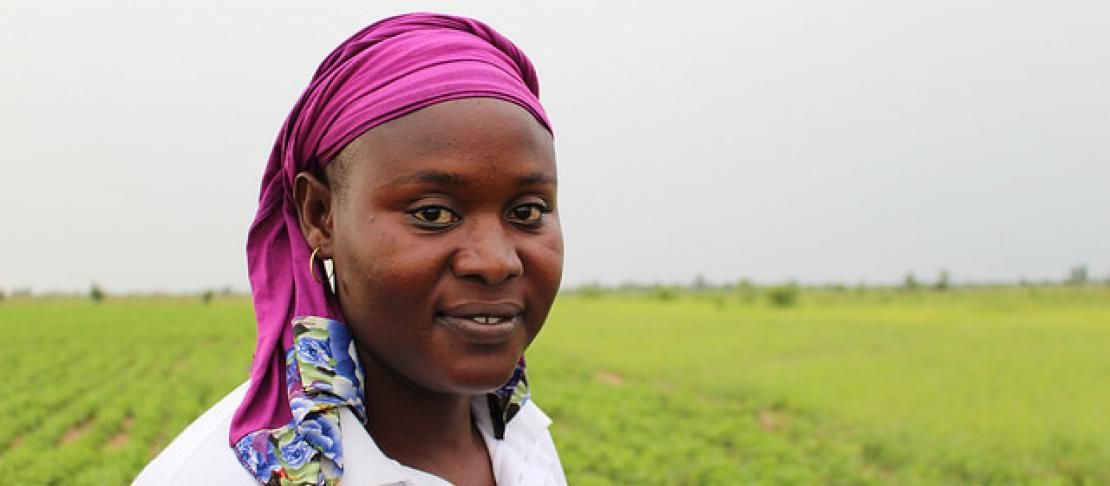
In celebration of the International Day of Rural Women, we’re highlighting projects that use technology to improve the livelihoods of rural women and help to mitigate the effects of climate change.
Agriculture is often the primary employer and the only source of livelihood for women living in rural areas of developing countries. Women make up nearly half of the agriculture workforce in some countries. For example, in sub-Saharan Africa, women comprise, on average, up to 50 percent of the agricultural labor force. In Asia, it is about 38% while in Latin America, it is about 20%[i]. There is increasing evidence that suggests that if women had the same level of access to resources as men, their farm yields could be increased from 20 to 30 percent and reduce the number of people experiencing hunger from 12 to 17 percent. Depending on the country and crop, the gender gap in agricultural productivity ranges from four to 40 percent. This is a critical gap that needs to be narrowed if countries intend to improve the lives and livelihoods of women in rural areas.
While much of the agriculture productivity gap results from the lack of women to own and control land and women’s limited access to resources such as credit, inputs, insurance and extension services[ii], climate change is also proving to be a serious threat to agriculture. Changing weather patterns, especially warmer and drier conditions are causing immense negative impacts on agricultural productivity. In some regions, dry seasons are longer and rainfall more uncertain while in other regions, floods are increasing. All these changes are affecting the gendered division of agricultural labor and having negative effects women’s food security and incomes. Furthermore, women still lack representation in policy and decision-making conversations at all levels (global, regional, national and local) that could help them better cope with the changing climate.
As Lien Huong Do, a policy researcher with the Institute of Policy and Strategy for Agriculture and Rural Development (IPSARD) explains,
Employing participatory approaches is highly necessary, but it is not an easy task because it involves stakeholders of different levels of knowledge, participation and interests on climate change. There are several cross cutting issues that need taking into serious consideration such as gender equality, sustainable development, and the environment.”
All is not lost, however. There are examples of successful practices across the globe where women are actively engaging in addressing the impact of climate change on agriculture.
One solution to helping women better cope with the realities of climate change is technology
One solution to helping women better cope with the realities of climate change is technology. Innovations, including new methods of communication, more efficient energy and cooking methods, and sustainable agricultural practices have the potential to help women adapt to climate change. In celebration of the International Day of Rural Women, which looks to recognize the contribution of rural women towards development, poverty reduction, and food security, we’re highlighting projects that use technology to improve the livelihoods of rural women and help to mitigate the effects of climate change.
A number of projects in Sub-Saharan Africa aim to help farmers manage their land sustainably. In Ethiopia, the Africa RISING research team, which is composed of several communities, the International Center for Tropical Agriculture (CIAT), International Livestock Research Institute (ILRI), World Agroforestry Centre (ICRAF), International Water Management Institute (IWMI), International Crops Research Institute for the Semi-Arid Tropics (ICRISAT), and Mekele University, are working together to find innovate methods to better manage land and water in an effort to prevent erosion.
Farmers are also telling their own stories through the use of technology, including video and photography. A number of projects, facilitated by CIAT feature farmers telling their own stories and describing how farming can be more sustainable. The short film, Don’t Destroy the Environment, which was created by a group of nine farmers and community members from Kunzokalla Village in the Jirapa District of Ghana. A similar film, The Environment is Life includes 11 community members from Mwangoi and Malindi villages in the Lushoto District of Tanzania. In Kenya, a photo-film titled, The Ground Beneath Your Feet, illustrates how changing weather impacts soil degradation. The Nairobi Water Fund, an organization featured in the film, is another innovative method of reducing degradation. Through the fund, downstream donors and major water consumers support upstream conservation.
Watch the video: Don't destroy the environment
In Uganda, another project of CIAT is the preservation of biodiversity. The Kawanda-based gene bank, which is part of Uganda's National Agricultural Research Organization (NARO) and a member of the Pan-Africa Bean Research Alliance (PABRA), saves and preserves bean seeds from throughout Africa. Farmers test and provide feedback about the beans’ traits, including drought resilience and disease resistance. The process helps make farmers’ plots more resilient to the impacts of challenges such as climate change.
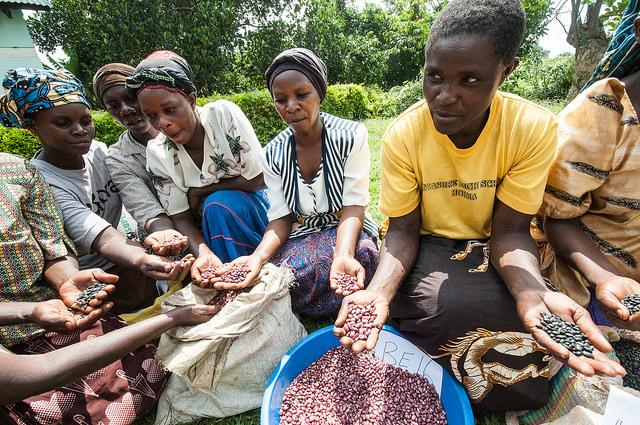
Beans are evaluated, through participatory feedback with farmers to learn and test specific traits such as drought resilience, disease resistance or high iron. Photo: G. Smith (CIAT)
In Nyando, Kenya, a recent Climate-Smart Village project, led by the CGIAR Research Program on Climate Change, Agriculture and Food Security East Africa (CCAFS EA) trained 160 women on sustainable agricultural practices such as push-pull technology. The method calls for the intercropping of cereals with plants that protect them from weeds. This method protects cereal crops while at the same time producing fodder for farm animals. Other technologies, such as improved seed varieties, online extension services, and new gardening methods, such as multi-story gardening and keyhole gardens, were shared as methods of improving yield while coping with climate change. Read more: Empowering women farmers to feed the world
Another project taking place in Kenya, as well as Uganda and Peru, is WeFarm, a peer-to-peer SMS-based knowledge-sharing platform currently being used by over 84,600 farmers. WeFarm provides information to farmers, such as how to improve crop yield or start a business, with the goal boosting the livelihoods of smallholder farmers. The platform allows farmers to ask questions and receive answers within minutes from farmers around the world. One such user, named Rose, has used the service to learn how to manage pests and crop diseases, increase soil fertility, and how to keep chickens. Rose reports that not only is WeFarm a good source of knowledge, but that it has made her more confident in her farming skills.
Rose is a tea farmer who has benefitted from using mobile technology. Accessing crowdsourced information by SMS through WeFarm has helped her improve her livelihood. Photo: WeFarm
In Asia, CCAFS-led research from the Philippines and Vietnam indicate that although women are important contributors to agriculture production, they were less likely than men to participate in household decisions or to attend agriculture training workshops. In 2015, researchers distributed stress tolerant rice varieties in South Vietnam with the goal of increasing the adoption of climate-smart rice production technologies. Results from the project showed a significant level of knowledge gain. Dr. Thelma Paris, a gender specialist with the CGIAR Research Program on Climate Change, Agriculture and Food Security (CCAFS) and one of the researchers involved in the project explained the importance of gender inclusion. “If women are given equal opportunities with men,” she said, “they can help in better farm management decision.”
In India, a recent study examined the gender dimensions of a climate-smart agriculture technology called a drum seeder. Transplanted rice requires more labor, resources, and contributes more to greenhouse gases compared to direct-seeded rice (DSR) method using a drum seeder. Research from the International Food Policy Research Institute (IFPRI) examined the willingness of both men and women to adopt this new technology. Their findings indicated gender played an important role in explaining variation in willingness to use a seed drummer. Since men had more power in determining how household money was spent, their primarily concern lay in increasing income. Women, however, contributed a large portion of labor to the household, making their primary concern in labor-saving innovations. Read more: Women have greater say in agricultural decisions: study | The Navhind Times
This examples of innovations from the around the world illustrate the potential of technology to improve the lives of women and increase their ability to produce food and provide an income for their families. The International Day of Rural Women is a reminder of the contributions that rural women make to their families, communities, and development. In celebration of the International Day of Rural Women, we hope you’ll join us in advocating for policies that improve women’s access to resources, including technology.
[i] FAO, 2011. The state of food and agriculture. Women in agriculture closing the gender gap for development. FAO Rome
[ii] World Bank, World Development Report 2012
Mary Nyasimi is Science officer and Kathlee Freeman is Communications Assistant at CCAFS Gender and Social Inclusion Flagship.

